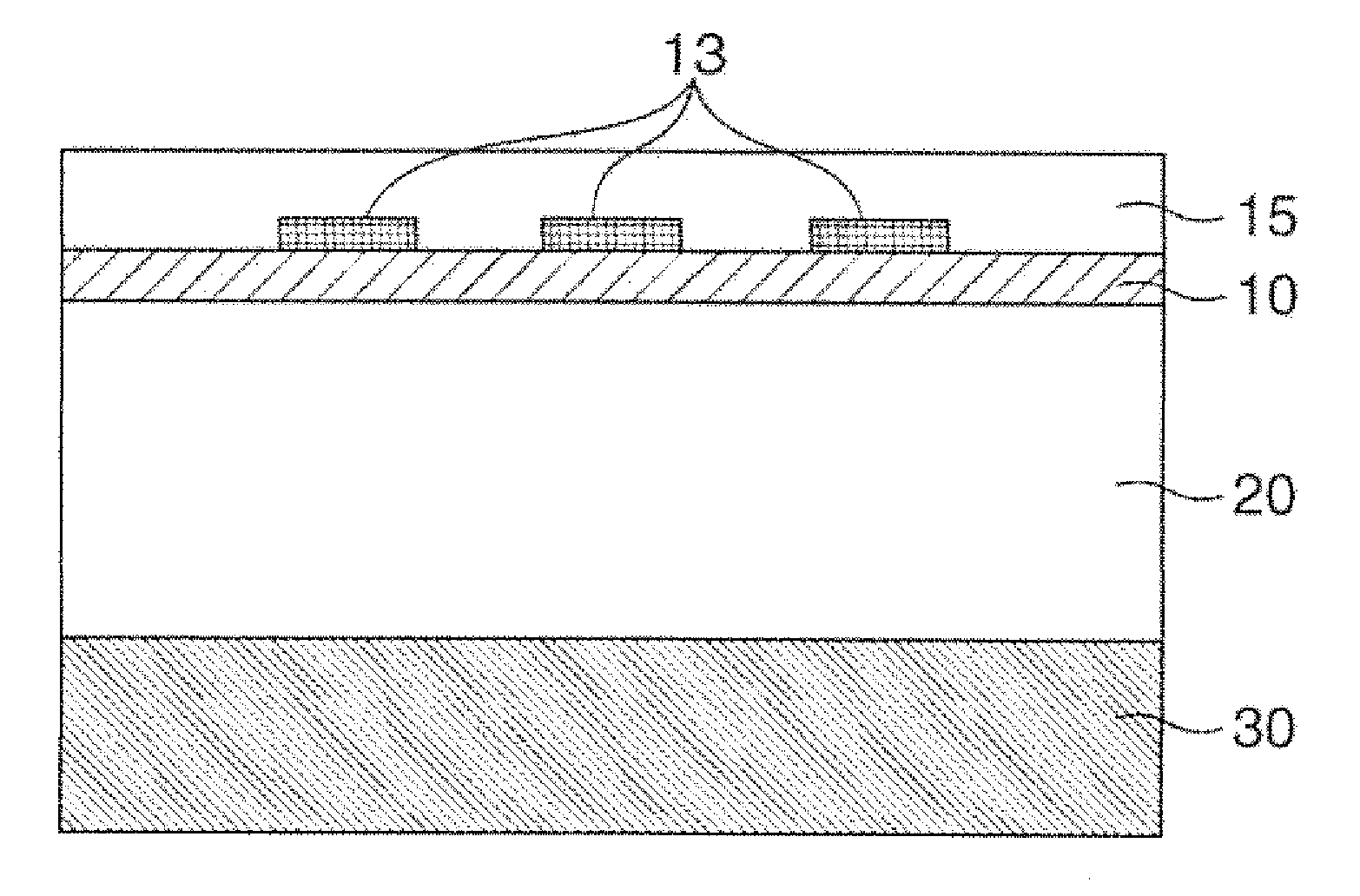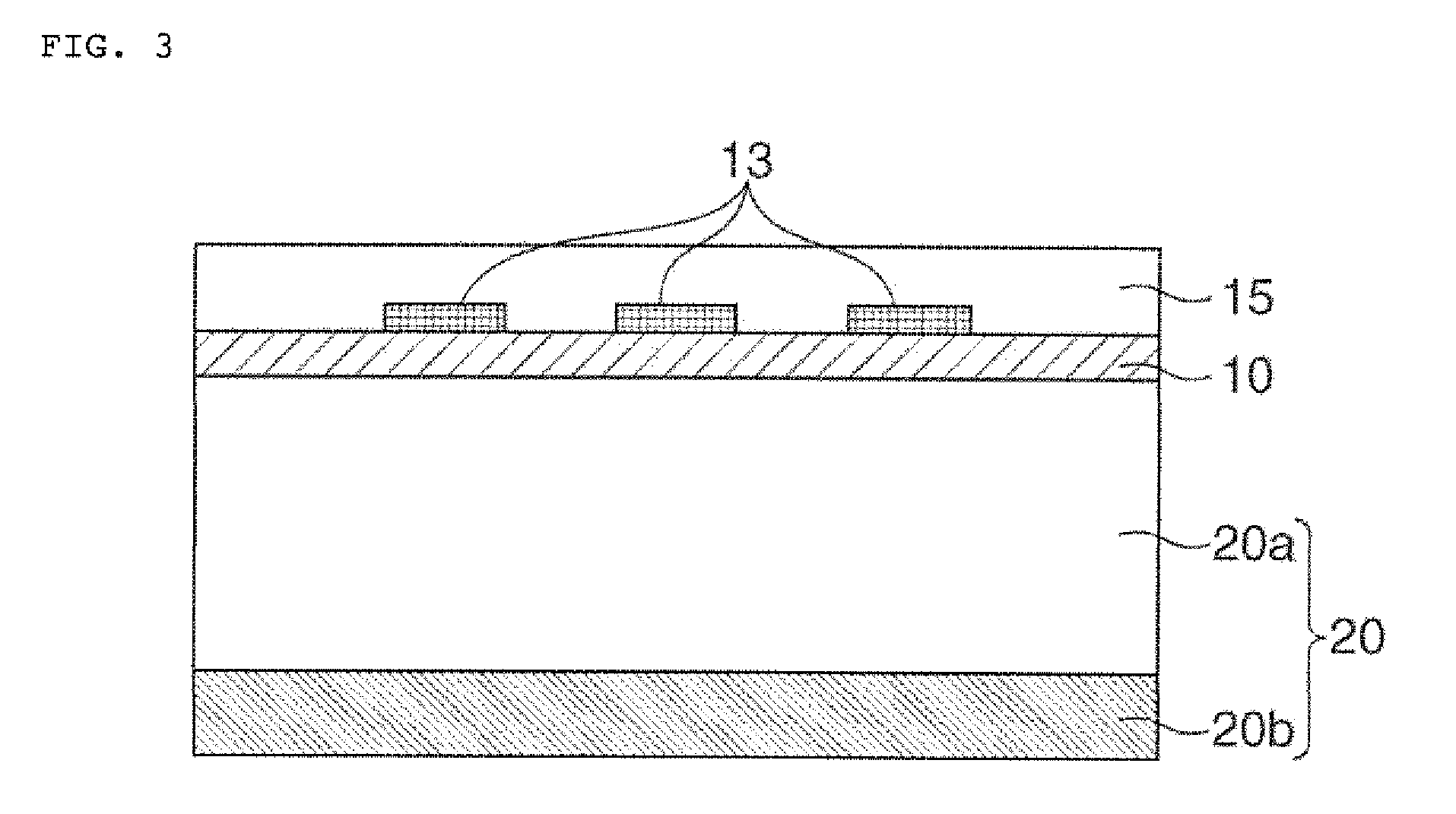Printing film and face material
- Summary
- Abstract
- Description
- Claims
- Application Information
AI Technical Summary
Benefits of technology
Problems solved by technology
Method used
Image
Examples
examples
[0141]The present invention is described in more detail below by Examples. However, these Examples are only illustrative and not intended to limit the present invention thereto, and other changes and modifications may be possible unless the subject matters thereof depart from the scope of the present invention. Meanwhile, the terms “part(s)” and “%” used in the following Examples and Comparative Examples represent “part(s) by mass” and “% by mass” unless otherwise specified.
(1) Evaluation Methods:
[0142]The methods of measuring various evaluation items used in the following Examples and Comparative Examples are as follows.
(1-1) Mass Melt Flow Rate (MFR):
[0143]According to ISO 1133, the mass melt flow rate was measured at 240° C. under a load of 98 N. The unit of the measured value was “g / 10 min”.
(1-2) Heat Resistance: Elongation Ratio Under Heating
[0144]The film before subjected to drawdown-printing was cut to a film strip having a width of 1 inch and a length of 300 mm, and the thus...
example 11a
[0186]A transparent resin film was thermo-compression-bonded and laminated onto the printed surface of the film obtained in Example 1A by applying a pressing force of 20 kg / cm2 thereto at a temperature of 150° C. for 15 min to prepare a decorative film. Meanwhile, a 50 μm-thick acrylic resin film formed of a copolymer comprising methyl methacrylate, butyl acrylate and styrene at a mass ratio of 81 / 16 / 3 (total amount of the three components was 100 parts by mass) was used as the transparent film. As a result, it was confirmed that the film-forming property was good without any problems, and the resulting decorative film exhibited a beautiful appearance.
example 12a
[0187]The same procedure as defined in Example 11A was conducted except for using the film obtained in Example 5A, thereby preparing a decorative film. As a result, it was confirmed that the film-forming property was good without any problems, and the resulting decorative film exhibited a beautiful appearance.
Systems Comprising Inorganic Filler
PUM
| Property | Measurement | Unit |
|---|---|---|
| Temperature | aaaaa | aaaaa |
| Percent by mass | aaaaa | aaaaa |
| Percent by mass | aaaaa | aaaaa |
Abstract
Description
Claims
Application Information
 Login to View More
Login to View More - R&D
- Intellectual Property
- Life Sciences
- Materials
- Tech Scout
- Unparalleled Data Quality
- Higher Quality Content
- 60% Fewer Hallucinations
Browse by: Latest US Patents, China's latest patents, Technical Efficacy Thesaurus, Application Domain, Technology Topic, Popular Technical Reports.
© 2025 PatSnap. All rights reserved.Legal|Privacy policy|Modern Slavery Act Transparency Statement|Sitemap|About US| Contact US: help@patsnap.com



